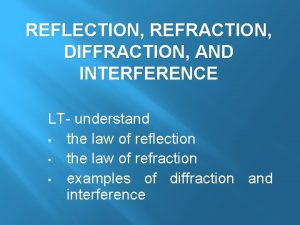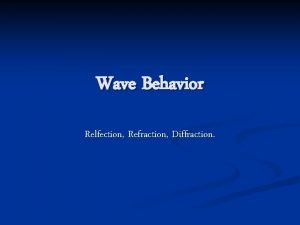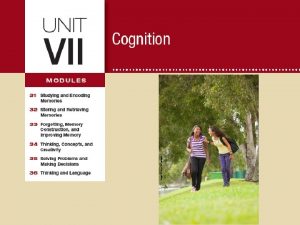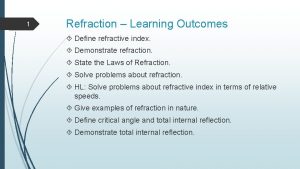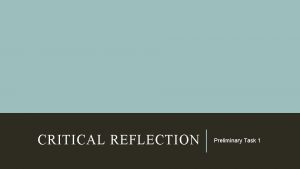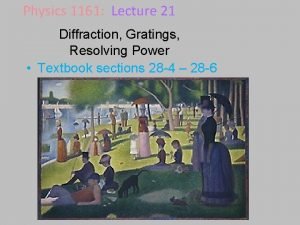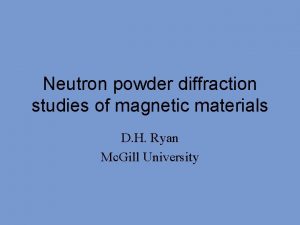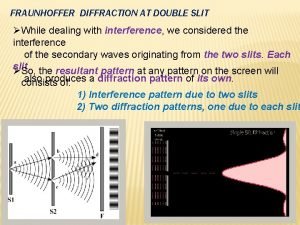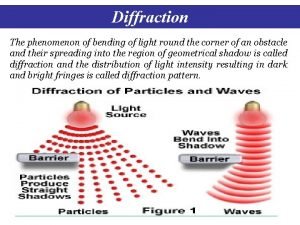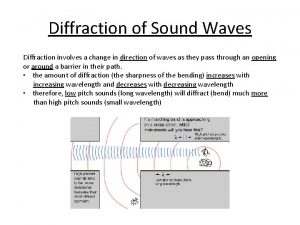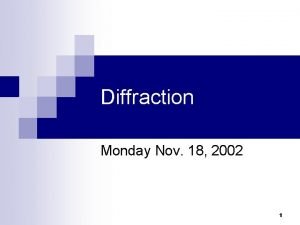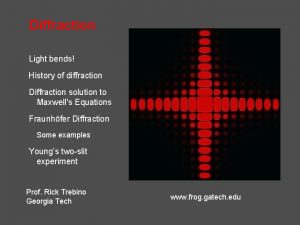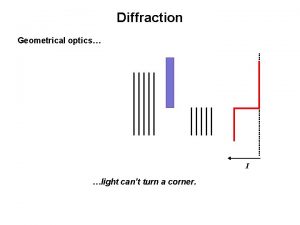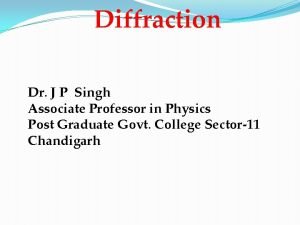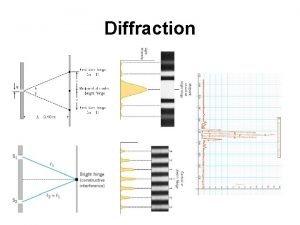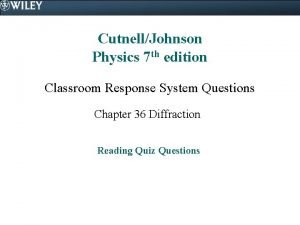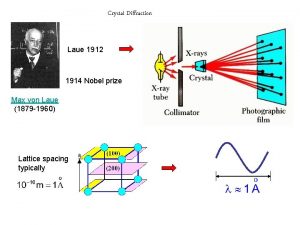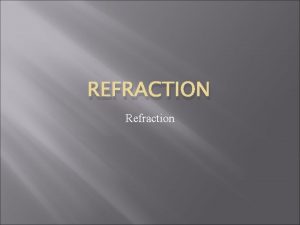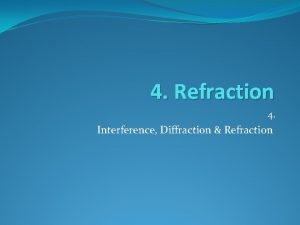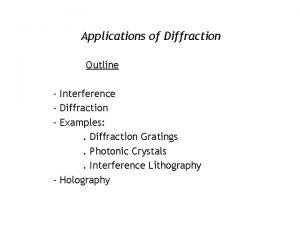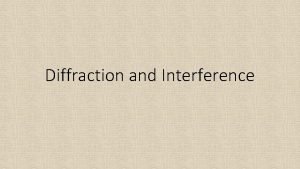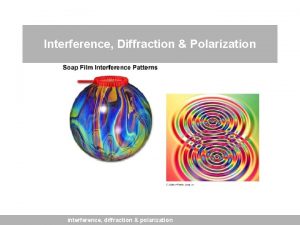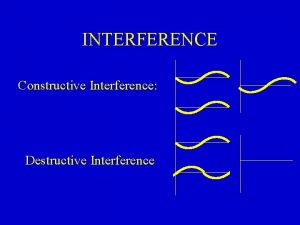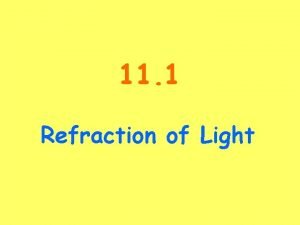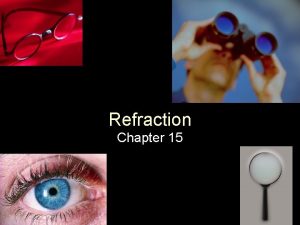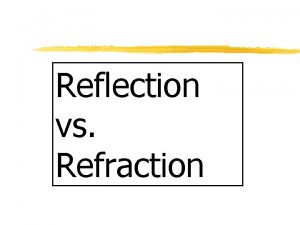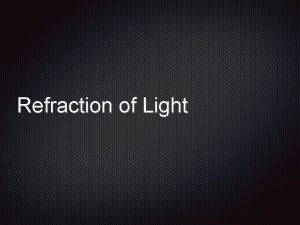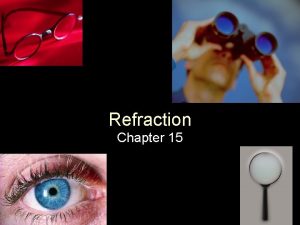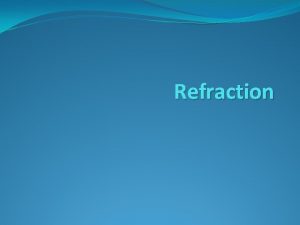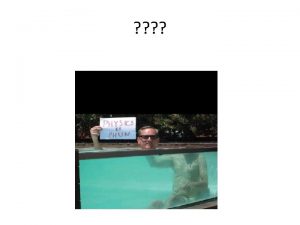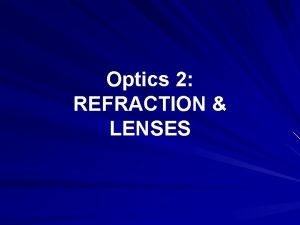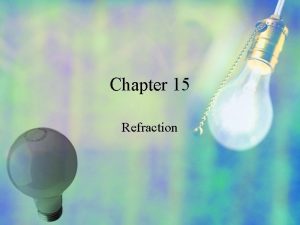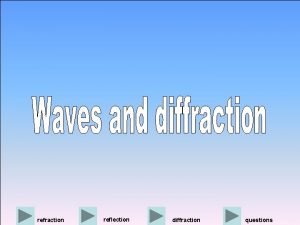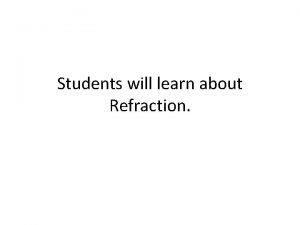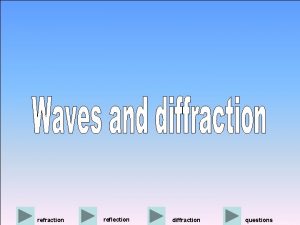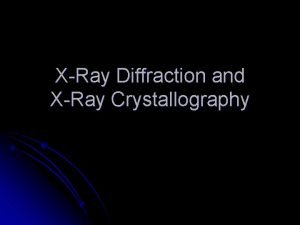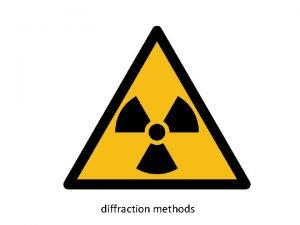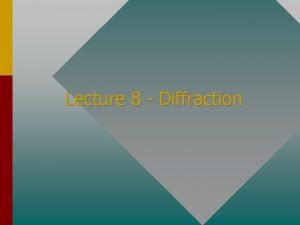2 Interference Patterns 4 Interference Diffraction Refraction Learning
























- Slides: 24

2. Interference Patterns 4. Interference, Diffraction & Refraction

Learning Intentions �Identify different types of Interference. �Investigate the interaction of waves to form interference patterns. Success Criteria �I can identify and name two types of interference �I can explain interference patterns produced by two coherent sources �I can calculate path difference and relate this to wavelength.

What happens when waves meet? It depends on their phase relationship… https: //www. youtube. com/watch? v=P_r. K 66 GFe. I 4

Interference of Light-Constructive Interference 2 waves meet in phase


Interference of Light- Destructive Interference Out of phase


Interference �Whenever waves meet interference occurs. �When waves are “In Phase”, they are always exactly a whole wavelength apart. �When waves are “completely out of phase”, they are always exactly half a wavelength apart.

�When waves meet in phase constructive interference occurs. �When waves meet completely out of phase destructive interference occurs

Diffraction and Coherence We have discussed what happens when a wave passes through a gap and we have discussed what is meant by a coherent wave. Now try extending this image on a whiteboard to see how two waves interact.

Diffraction and Coherence It should look something like this… We will now draw a diagram to find out where points of minimum and maximum intensity will be found

Interference Pattern �Wherever crests meet crests (or toughs meet troughs) constructive interference will occur producing maximum intensity. �Wherever crests meet troughs in this pattern destructive interference will occur producing a minimum intensity.

Interference and Sound We will now walk through a demo of sound interference. Think back to Nat 5… What can sound interference be used for ? Would we observe similar interference effects with light?

Young’s Slit Experiment When light from a coherent light source passes through 2 slits the waves diffract and interfere. On a screen the regions of constructive interference appear as bright fringes with dark spots of destructive interference in between. This is known as an interference pattern.

Summary Interference Patterns �When two coherent sources interfere they cause an interference pattern of maximum and minimum intensity. � Where the waves meet constructively they are always in phase and hence exactly a whole number of wavelengths apart. �Where the waves meet destructively they are always completely out of phase and hence a half number of wavelengths apart. https: //www. youtube. com/watch? v=BLyg. Sj 8 m 6_I

Path Difference The difference in distance that each wave travels determines whether the waves are in phase or out of phase. If two coherent wave sources are place equal distances from a detector the waves will arrive at the detector at the same time. Both waves will travel the same distance so there will be no path difference and the waves will arrive in phase.

Path Difference Two coherent waves S 1 & S 2 travel to a detector. S 1 travels 1. 5 m and S 2 travels 1. 75 m. How would we calculate the path difference? Here, path difference= 1. 751. 5= 0. 25 m

Path Difference = distance 1 st wave – distance 2 nd wave. How do we know if waves will interfere constructively or destructively when they meet? Constructive interference: Destructive interference: -A maxima occurs when the path difference is an integer number of wavelengths of the source -A minima occurs when the path difference is an integer + 1/2 number of wavelengths of the source p. d. =mλ Where m is an integer p. d. =(m+1/2)λ

Example

Let’s Look Closer

Order of Maxima/Minima If we know the order of the maxima or minima, we can use the path difference to calculate the wavelength of the wave source.

Example Microwaves that have a wavelength of 3. 0 cm are passed through two slits in a barrier. A detector is moved along line A-B from the central position, through two points of minimum response to the third point of minimum response. Calculate the path difference at this point.

SCHOLAR Simulation & Questions

Questions 5. Interference & Diffraction Q 1 -4 & 6 https: //www. youtube. com/watch? v=BLyg. Sj 8 m 6_I
 Reflection refraction diffraction interference
Reflection refraction diffraction interference Reflection refraction diffraction
Reflection refraction diffraction Blue relfection ray
Blue relfection ray Diffraction and polarization
Diffraction and polarization Proactive interference example
Proactive interference example Source amnesia
Source amnesia Laws of refraction
Laws of refraction Reflection and refraction learning task 1
Reflection and refraction learning task 1 Cuadro comparativo de e-learning b-learning y m-learning
Cuadro comparativo de e-learning b-learning y m-learning Dating serves several important functions that include:
Dating serves several important functions that include: Closed patterns and max-patterns
Closed patterns and max-patterns First minima in diffraction
First minima in diffraction Multiple slits diffraction
Multiple slits diffraction Magnets for neutron diffraction
Magnets for neutron diffraction Absent spectra in diffraction grating
Absent spectra in diffraction grating Resolving power and dispersive power of grating
Resolving power and dispersive power of grating Difference between fresnel and fraunhofer diffraction
Difference between fresnel and fraunhofer diffraction Sound diffraction
Sound diffraction Fresnel and fraunhofer diffraction
Fresnel and fraunhofer diffraction Diffraction
Diffraction Fresnel and fraunhofer diffraction
Fresnel and fraunhofer diffraction Missing order in diffraction
Missing order in diffraction Diffraction grating
Diffraction grating Diffraction in a sentence
Diffraction in a sentence Von laue
Von laue
